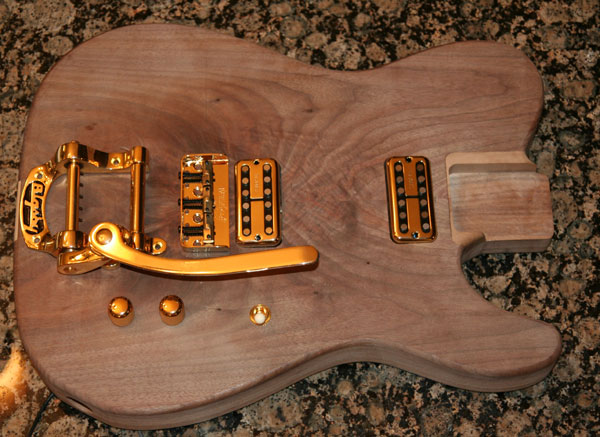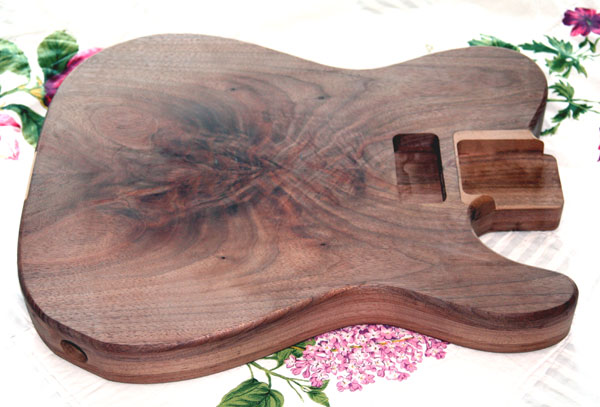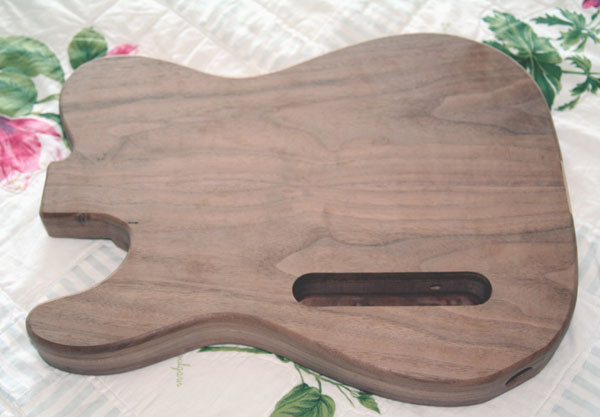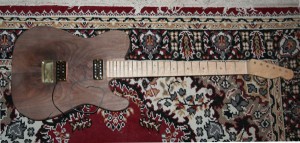Psalm 40:3
Tuesday, April 5th, 2011I Know Very Little
Thought I’d update people on my musical progress.
I now have…I am too lazy to count…maybe six electric guitars? I got three Japanese jobs, which are very slick, quality items. I got my Chinese Epiphone Riviera P93. I got a Telecaster American Special. Plus my older instruments.
I got them all for different reasons. None were expensive. I planned to get myself a really sweet high-end guitar on January 8 (Elvis’s birthday), as a reward for studying for 6 months, and I got various affordable instruments to simulate the expensive guitars I was considering. The Japanese Les Pauls are sort of like Gibson Les Pauls. The Riviera and the Japanese ES335 clone are sort of like ES335s. You can see what I was trying to do.
I stuck a Stetsbar vibrato on the Telecaster. You’re not really supposed to do that, but you can imagine how much I care about tradition. The Stetsbar is made by an entrepreneur named Eric Stets. It’s very nice, but it doesn’t really fit a Telecaster without substantial grief. The bridge pickup hole presses against the pickup wires and shorts them out, and it prevents you from raising the pickup to the correct height. And you have to shim the neck to make it work, and the shim he provides is real garbage, so you have to make one, using your garage full of expensive woodworking machines. Which you probably don’t have, but I do.
I had to put the Stetsbar on my milling machine and hollow out an area on the underside to provide clearance for the pickup wires. How many people, realistically, are going to be able to get something like that done? Finding a machine shop is a real pain for most people. For me, it amounted to walking five feet across the garage.
Now it fits, but I would not recommend it to anyone else. Unless you know me or someone like me, you may have serious problems putting one of these on a Telecaster. Hopefully the manufacturer will find the time to make the needed changes. Everyone gives the vibrato rave reviews, so it appears to be worth the effort.
I have not completed my walnut Telecaster clone. I got to the point where it was nearly ready to finish, and and there was a problem with the grain matching where I redid the neck pocket, so I procrastinated for months instead of deciding what to do. I promise I’ll get it done.
My History Les Paul clone sat idle for a long time, because I could not get the Harmonic Designs Z90 pickups to work. For some reason, the bridge pickup gave me a resistance figure of 0Ω, which was something like 10,000Ω short. In other words, a short. I got them to agree to look at it, but before I packed it up to send it in, I checked the resistance, and it was back to normal. So I must have caused the problem. Now it’s installed, along with big American potentiometers and Orange Drop capacitors. The neck pickup is really nice. The bridge pickup is not quite as wonderful, but that may just reflect my love of neck pickup sounds. The guitar looks magnificent. I bought tortoise-shell pickup covers, which have a pretty severe pimp quotient.
I stuck Pearly Gates humbuckers on my ES335 clone. Very nice. I think I have the action a little too low, however. That can adversely affect the sound. Seems a little thin at the bridge.
The surprising winner, out of all the instruments, is the Epiphone Riviera. If you like the blues, BUY one of these things. Don’t fool around. Just buy it. Make sure you get one that has a good neck and no major QC problems. Then put Lollar P90s on it, and change the tone capacitor. You won’t believe the sounds that will come out of it. Just beautiful.
You’ll have to learn how to work the knobs and switch. This thing has three pickups, which seems like a dumb idea, but it works. To isolate the end pickups, you have to turn the middle volume down to zero. To isolate the middle pickup, turn the end pickups down. The selector switch will not mute the middle pickup, so you have to do it with the knobs. Once you get this straight, the guitar starts to make sense.
I’m taking lessons now, from a guy at church. He’s one of the Armorbearers. He’s a fantastic blues guitarist and vocalist. Just a blast to listen to. I took the ES335 clone to him, and he liked it a lot. Keep in mind: this is a top-quality instrument, put together better than a Gibson. A week later, I let him try the $500 Chinese Epiphone, and he said it was better. I have to agree. It plays a little easier, and the tones are sweeter. All told, I have about $1000 in it, which isn’t bad for a semihollow with a Bigsby, three boutique pickups, and a great SKB case.
I have a pile of amps. I got a Vox AC4TV with a 1/4-watt setting, figuring it would be good for low level play. It’s not bad, but it’s not phenomenal. I also tried a Bugera V5, which attenuates to 1/10 watt. Again, nice, but not amazing. At the moment, I really like my Blues Jr. and my Super Champ XD. Between the two, I’d probably keep the Super Champ. It’s easier to work with at low levels, and it has built-in effects which are useful when you have to go somewhere and you don’t want to carry pedals. But the Blues Jr. is also very good.
My lesson guy wants to build amps. I told him about my insane tool collection, and we made a decision. Free lessons for me; free tool access for him. We’re going to try to build a Super Reverb clone, if he ever gets around to buying the parts. It won’t be very hard. It’s just soldering and turning screws. You don’t have to build anything from scratch.
As preparation, I’ve decided to build a Firefly amp. This is a well-known DIY design. It puts out less than a watt, without attenuation. I’m hoping it will give me improved sound at low levels. I’m going to put a crappy, insensitive 12″ Weber speaker on it. The description on the Weber site gives me hope that this speaker will strain the amp and improve the sound, and that it will have the kind of coarse sound a blues amp should have. If not, it will still be fun to put together. The only hard part (far as I know) is building the external cabinet, and I’ve already designed it and roughed out the wood. I want to use a separate cabinet so I can take the Firefly head with me and use it on different cabinets.
The junk to make the amp is on order. I hope to have the cabinet basically finished before anything arrives.
Zach (lesson guy) has me working on F scales, which will make my left hand work better. The scales have all sorts of hideous stretches in them. My finger joints are actually sore these days. I hope this stuff works out.
On the music side, I’m practicing “I Know a Little” every day. Steve Gaines was an incredible guitarist, and the intro to this song is murder. I thought I would never get it. He plays at 220 beats per second, and the moves would take some effort at a third of that speed. I’ve been pounding on it for weeks. I think most people would have given up by now, but I remember two things. First, I went back to school at age 30 and got a physics degree, after failing math in high school. That makes almost anything look easy. Second, when I learned to flatpick, I was convinced it would never work, because after several months, I still could not do it. Then it came together, showing me that the body and brain can develop brand new abilities over time. Flatpicking is a totally unnatural activity. It took me about 6 months to grow the right neurons or whatever. Fretting works the same way, so I know I’ll eventually overcome the left-hand challenges in this song.
I have changed the way I hold the pick twice, which means I’ve done it three different ways. This is irritating, because every time I change it, I have to get new muscles to work, and I have to get the brain connections going. But I think it was necessary. I played for years, not realizing I was making very dumb ergonomic choices.
I’ve also tried different picks. I started out with the rubbery black and grey nylon Dunlop picks I used for bluegrass, and I’ve tried other things. I bought some stubby Dunlop jazz picks, decided they were worthless, and gave them to Zach. He went off to college, returned after a number of months, and came back and thanked me for the great picks. Naturally, I had to try them again, and it turned out they were very well-suited to my new way of holding the pick, and to playing fast passages like the ones in the Skynyrd tune. Live and learn.
I keep trying new picks. This week I received some Greg Koch instructional DVDs, and I noticed he was using a giant triangular pick. This guy can REALLY play, so I dug through my mountain of unused picks and got out a hard green Dunlop triangle. Sure enough, it works. Don’t ask me to explain this, but it’s just as fast as the tiny stubby pick, but it’s much, much easier to hang onto, so my hand feels more relaxed, and I get more “swing” in the music. I have other picks which are physically much more like the little pick, but the huge Dunlop is the only one that gives similar performance. Weird.
For SRV tone, Koch uses a Super Reverb with a Tube Screamer and a Clyde pedal. The tone is perfect. That got me thinking about my Tube Screamer, which I had given up on, and I started rooting around the web. I learned something strange. To get SRV-type grit, you turn up the volume and turn down the drive. Isn’t THAT special? What could be more irritating than finding out the knobs don’t do what their names say they do? I started turning up the volume on my distortion and overdrive pedals, and now I’m in a whole new world of tone. Even my Pork Loin is doing great things.
Tonight I got the Epiphone out and fired up the Super Champ. I used the big green pick and various pedals, and I worked on “I Know a Little.” The picking started to work correctly. The swing kicked in. Finally, I got some expression into it. And I was even able to throw in some filler notes to make me happy. I started to realize this was eventually going to work, and that it wouldn’t be long. I began hearing wonderful variations in my head. I just have to keep working on sight-reading, so I can write this stuff down.
I’m trying to avoid working on my only other tune, “Tube Snake Boogie.” I just don’t like working on a song about cheap sex. I had a breakthrough tonight, so I guess I’ll be able to put that song behind me and replace it.
I keep finding myself thrown together with musicians at church. I’ve gotten to know the two main guitarists pretty well, and I do what I can for them. They give me a lot of great tips. Zach is an Armorbearer, and he’s also a fan of my pizza. One of the other Armorbearers plays twelve instruments and writes arrangements. He’s supposed to be a brutal talent. I talked to him the other day about his future, and about the frustration of putting up with bad Christian music, and I suggested he and some of the people he knows come to my house to work on music. I have a big piano, five guitar amps, and a big living room. And my dad would love to meet some good musicians. So we’re planning to do that. We have a world-class vocalist. Guy from Haiti. Maybe we can drag him into this. I keep telling him he’s going to be famous. He’s so humble, I’m afraid he’ll underestimate his gift and end up doing something else with his life.
So to recap, I’ll be making guitars in the garage. The guys will be jamming and writing music in the living room. And Zach and I are going to build an amp. Crazy.
Psalm 34 says God gives us the desires of my heart. My dream has always been to make music. I know that sounds wrong, to anyone who thinks of me as a writer or a cook, but those are my second and third choices. And building things I design has also been one of my dreams. I wonder where God is going to go with this.
He definitely knocked a bunch of frustrating barriers out of my way. I have the right instrument. I have the time and wherewithal and tools to do the things I want to do. I even learned which pick to use and how to hold it. The little bricks are arranging themselves into a coherent structure. I could not have done that on my own.
I have a feeling things are going to start moving for me in a little over two weeks. I’ll be passing a major milestone in my life, and for reasons I don’t want to go into here, I think it will be a pivotal time. Things are being cleared out of my way. I believe real progress is going to start toward the end of the month. I’m just mentioning it here so that if I talk about it after it happens, no one will be able to accuse me of faking a prediction. Not that it’s a prediction. Just a strong hunch, based on certain facts.





